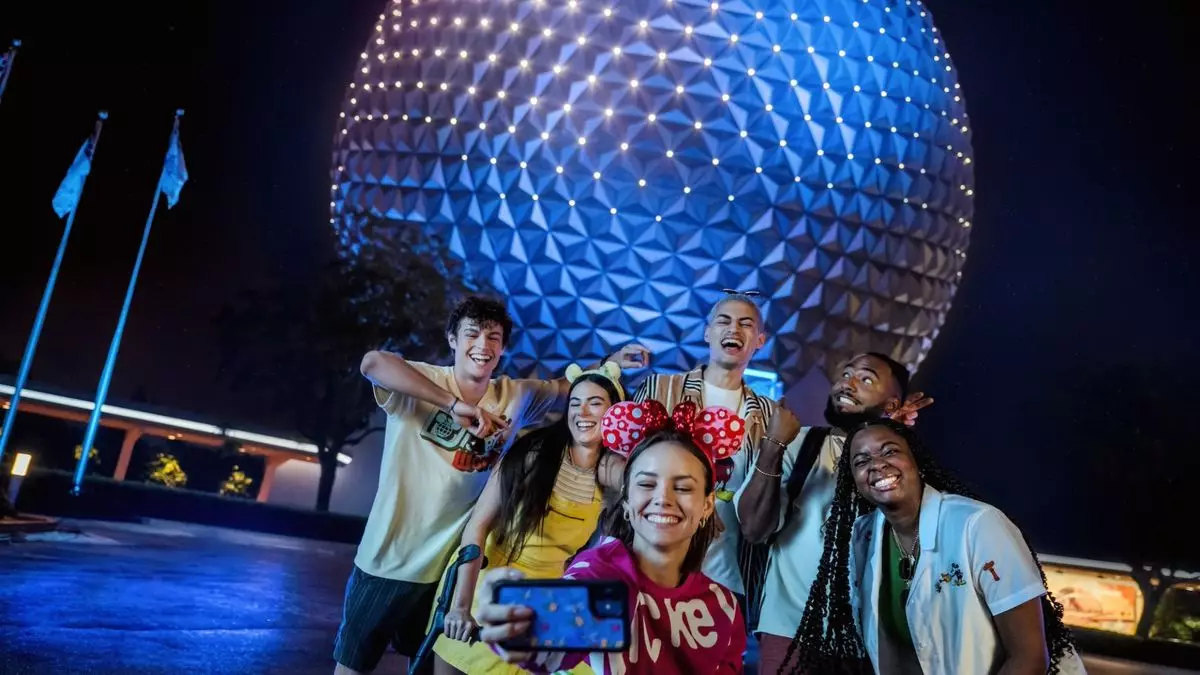The theme park experience has long been synonymous with long lines and wait times, capstone memories tinged with impatience. However, Disney has recently announced the introduction of the Lightning Lane Premier Pass, a novel approach designed to enhance the visitor experience by alleviating the burden of waiting. This new service offers patrons the opportunity to skip queues without the need to pre-schedule their visits, allowing for a freer, more spontaneous day at the parks.
The Lightning Lane Premier Pass is not available at a flat rate. Instead, guests can expect to pay between $129 and $449 per person, plus tax. The price fluctuates based on the park and the day of purchase, reflecting Disney’s strategy to tailor experiences according to demand. This tiered pricing model invites scrutiny, as it may raise concerns regarding accessibility. Families planning a visit may find themselves in a conundrum: weighing the cost against the time saved in line.
This offering arrives amidst the landscape of other skip-the-line products already implemented by Disney, namely the Lightning Lane Multi Pass and Lightning Lane Single Pass. Each of these requires a scheduling component, which contrasts sharply with the newfound flexibility provided by the Premier Pass. Herein lies a critical consideration; while increased options create a facade of enhanced customer choice, they also risk exacerbating existing class disparities among park visitors. Those who can afford the Premier Pass might be separated from those reliant on more traditional, budget-friendly options.
The functionality of the Premier Pass differs significantly between the Walt Disney World Resort in Florida and the Disneyland Resort in California. In Florida, the pass is exclusive to guests residing at deluxe Disney resorts and associated hotels, limiting its reach to upper-tier clientele. Consumers may perceive this as a tiered access system to Disney’s attractions, compounded with the stipulation that it must be purchased up to seven days before the intended stay. Conversely, Disneyland visitors will find a more inclusive offering, capable of utilizing the pass in both Disneyland Park and Disney California Adventure Park, provided they hold a Park Hopper admit ticket.
What remains critical is the caveat that, while the Premier Pass allows access to Lightning Lane experiences at any time, it necessitates valid admission. Guests will still encounter standby lines for most attractions, ensuring that the traditional park experience isn’t entirely eclipsed by this new service. By maintaining some semblance of conventional queuing, Disney keeps its broader audience in mind, but the overshadowing question persists: are these changes driving an elitist culture within the park?
From a financial perspective, the launch of the Lightning Lane Premier Pass represents a strategic business initiative for Disney. By capitalizing on visitors’ willingness to pay for convenience, the company diversifies its revenue streams and enhances its profit margins. In addition to the higher upfront costs, the pass includes enticing features such as unlimited digital downloads of attraction photos, a service which has become increasingly valued among visitors keen on capturing memorable experiences.
The pilot launch of the Premier Pass is set to commence with very limited quantities, an apparent strategy aimed at generating buzz and exclusivity surrounding the offering. However, the potential for backlash exists if guests perceive the rollout as privileged or insular.
As this new service begins its debut in late October, its ramifications for the future of theme park experiences remain to be seen. With the growing populism of expedited services in various consumer markets, Disney’s approach appears aligned with a broader trend across entertainment sectors. Yet, the balance of accessibility versus exclusivity will remain a tightrope that the brand must navigate.
While the Lightning Lane Premier Pass positions itself as an innovative stride towards improved guest experience at Disney parks, it simultaneously raises critical conversations around equity and economic disparity. As the pilot programs unfold, the industry will watch closely to see whether this latest venture cultivates guest satisfaction or just additional lines—this time, for those who can afford premium access.


Leave a Reply